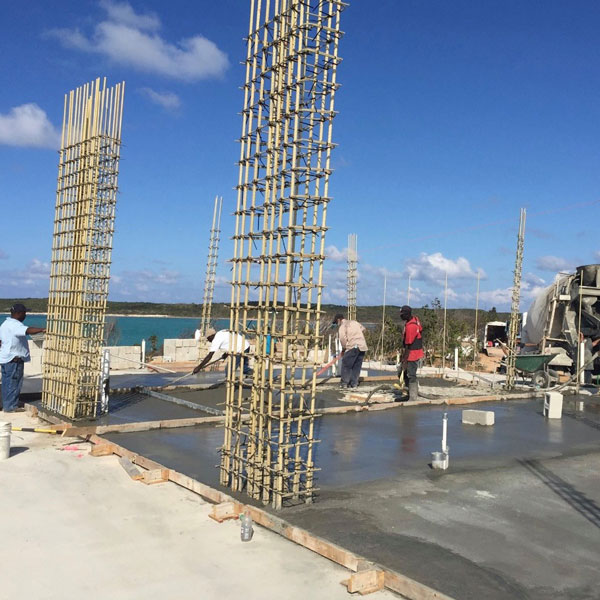- September 11, 2024
- Posted by: wellcoindustries
- Category: Rebar
Introduction
In recent years, fiberglass rebar has emerged as a revolutionary material in the construction industry, particularly for use in walls. Unlike traditional steel reinforcement, fiberglass rebar offers several advantages, including resistance to corrosion, lightweight properties, and ease of handling. As the demand for more durable and cost-effective building materials grows, understanding the benefits and applications of fiberglass rebar in walls becomes crucial for construction professionals and property owners alike. This article explores why fiberglass rebar is increasingly being used in walls and how it can significantly enhance the longevity and performance of structures.

What is Fiberglass Rebar?
Fiberglass rebar, also known as Glass Fiber Reinforced Polymer (GFRP) rebar, is a non-corrosive alternative to traditional steel rebar used in construction. Made from high-strength glass fibers and a resin matrix, fiberglass rebar is known for its durability and resistance to environmental degradation. Unlike steel, which can rust over time when exposed to moisture and chemicals, fiberglass rebar does not corrode, making it an ideal choice for structures exposed to harsh environments.
Comparison with Traditional Steel Rebar
While steel rebar has been the standard for reinforcement in concrete walls for decades, it comes with drawbacks, particularly susceptibility to rust and corrosion. This can compromise the integrity of a structure over time. Fiberglass rebar, on the other hand, remains stable and intact, ensuring a longer lifespan for the reinforced structure. Moreover, fiberglass rebar is approximately one-fourth the weight of steel, which makes it easier to transport, handle, and install.
Advantages of Using Fiberglass Rebar in Walls
Corrosion Resistance
One of the most significant advantages of fiberglass rebar is its resistance to corrosion. Unlike steel, which corrodes in the presence of moisture and oxygen, fiberglass rebar remains unaffected. This quality makes it particularly suitable for structures exposed to water, such as coastal buildings or underground installations.
Lightweight and Easy Handling
Fiberglass rebar is much lighter than steel, which reduces transportation costs and makes the handling process more manageable on construction sites. This ease of use can significantly reduce labor costs and time during the installation phase.
Cost-Effectiveness Over Time
While the initial cost of fiberglass rebar can be higher than that of traditional steel, its durability and resistance to corrosion mean fewer repairs and replacements over time. This long-term cost-effectiveness makes it an attractive option for many construction projects.
Enhanced Durability and Strength
Fiberglass rebar provides excellent tensile strength, which can enhance the durability and overall strength of concrete walls. It maintains its structural integrity under extreme temperatures and harsh environmental conditions, providing a reliable solution for reinforced concrete walls.
Applications of Fiberglass Rebar in Wall Construction
Residential Buildings
Fiberglass rebar is gaining popularity in residential construction due to its durability and reduced maintenance needs. It’s especially useful in areas with high humidity or saltwater exposure, where traditional steel reinforcement would quickly corrode.
Commercial Structures
In commercial buildings, where longevity and low maintenance are critical, fiberglass rebar provides an excellent alternative to steel. It’s commonly used in retaining walls, foundations, and exterior facades.
Infrastructure Projects
Infrastructure projects, such as bridges, tunnels, and marine structures, benefit from fiberglass rebar’s non-corrosive properties. Its use in walls and other structural elements can greatly extend the service life of these projects, reducing the need for frequent maintenance.
Installation Process of Fiberglass Rebar in Walls
Installing fiberglass rebar in walls involves several steps:
- Planning and Design: Determine the rebar size and placement based on structural requirements.
- Cutting and Bending: Fiberglass rebar can be cut with standard tools and bent to the required shape without specialized equipment.
- Positioning and Securing: Place the rebar in the formwork according to the design, ensuring proper spacing and alignment.
- Concrete Pouring: Pour concrete over the rebar, making sure it is adequately covered to protect it from external damage.
- Curing and Finishing: Allow the concrete to cure properly to achieve maximum strength and durability.
Key Considerations for Builders
When using fiberglass rebar, builders must consider factors such as bonding with concrete, thermal expansion properties, and load-bearing capacity to ensure optimal performance.
Challenges and Limitations
Despite its advantages, fiberglass rebar has some challenges:
- Higher Initial Cost: Fiberglass rebar can be more expensive than steel at the outset, which may deter some builders.
- Limited Awareness: The construction industry is still adapting to this newer material, and some professionals may lack knowledge about its benefits.
- Special Handling Requirements: Although it is lightweight, fiberglass rebar requires careful handling to avoid damage.
Solutions to Overcome These Challenges
Promoting education and awareness about the long-term benefits and cost savings of fiberglass rebar, along with continued technological advancements to reduce production costs, will help overcome these challenges.
Conclusion and Call to Action
Fiberglass rebar in walls represents a significant advancement in construction materials, offering enhanced durability, corrosion resistance, and cost-effectiveness. While there are initial challenges to adoption, the benefits it provides make it a compelling choice for modern building projects. If you are planning a construction project, consider integrating fiberglass rebar to maximize longevity and reduce future maintenance costs. Explore the possibilities with this innovative material and elevate the quality of your structures today.
